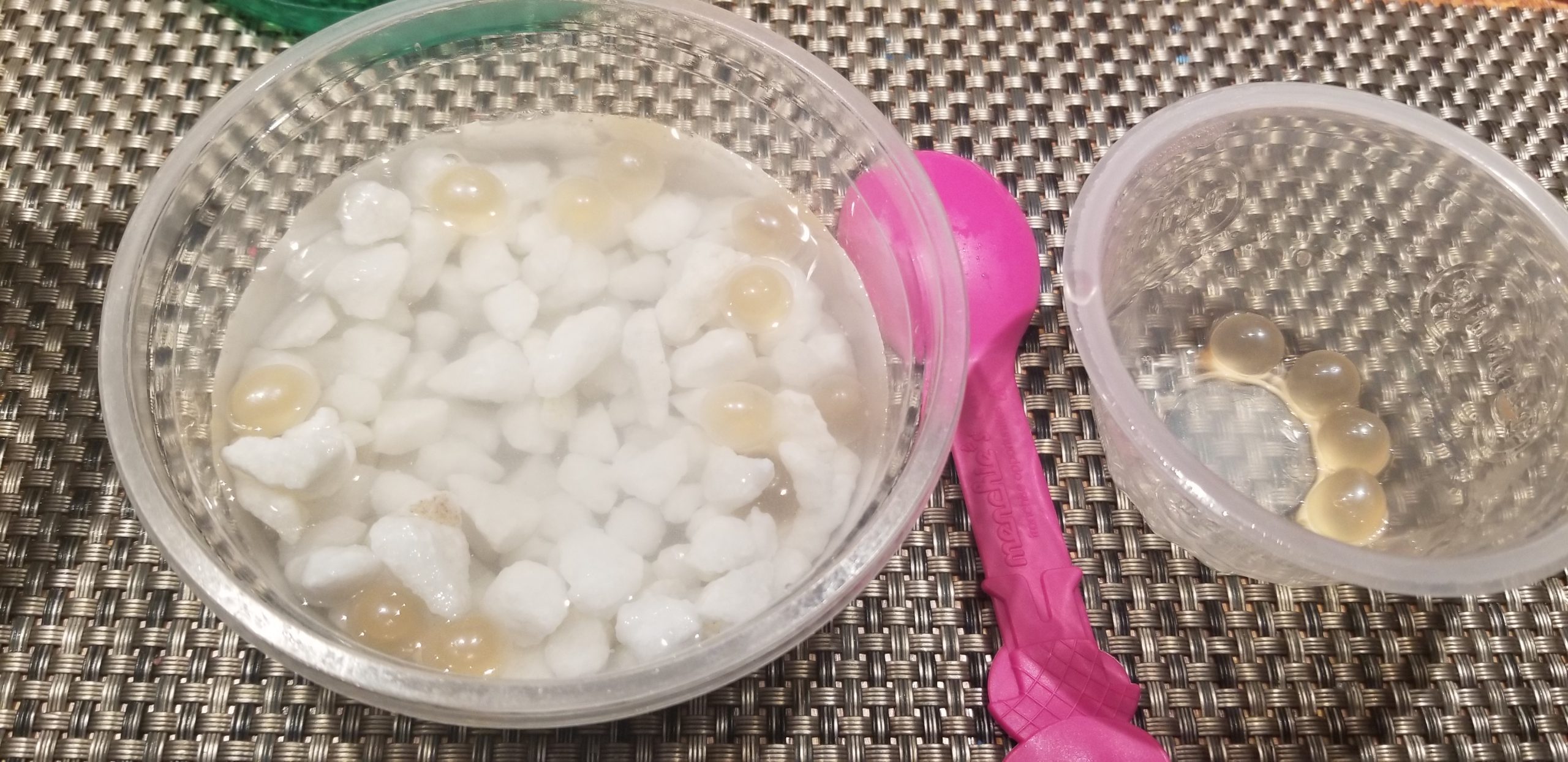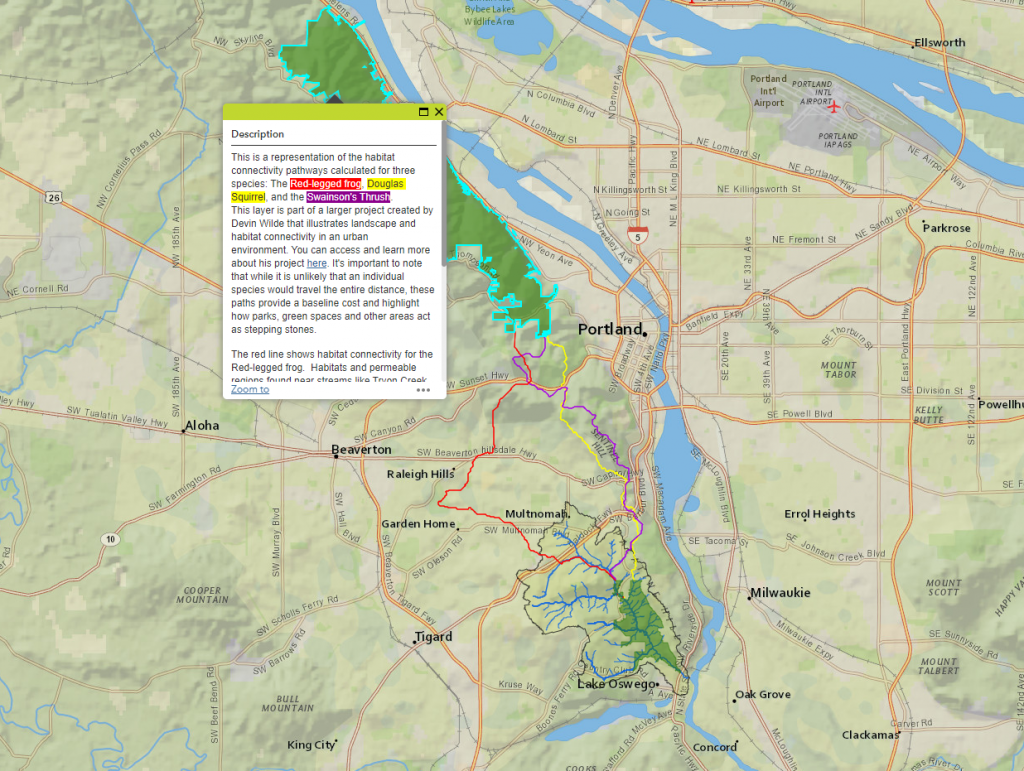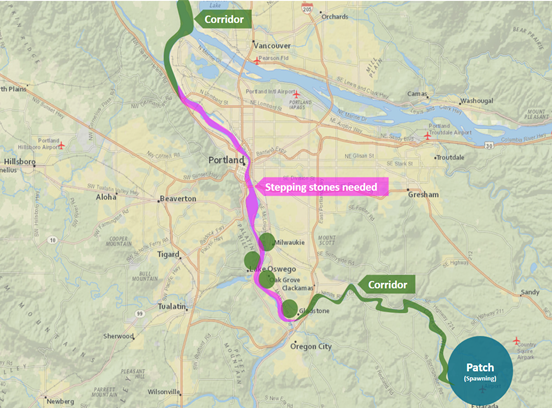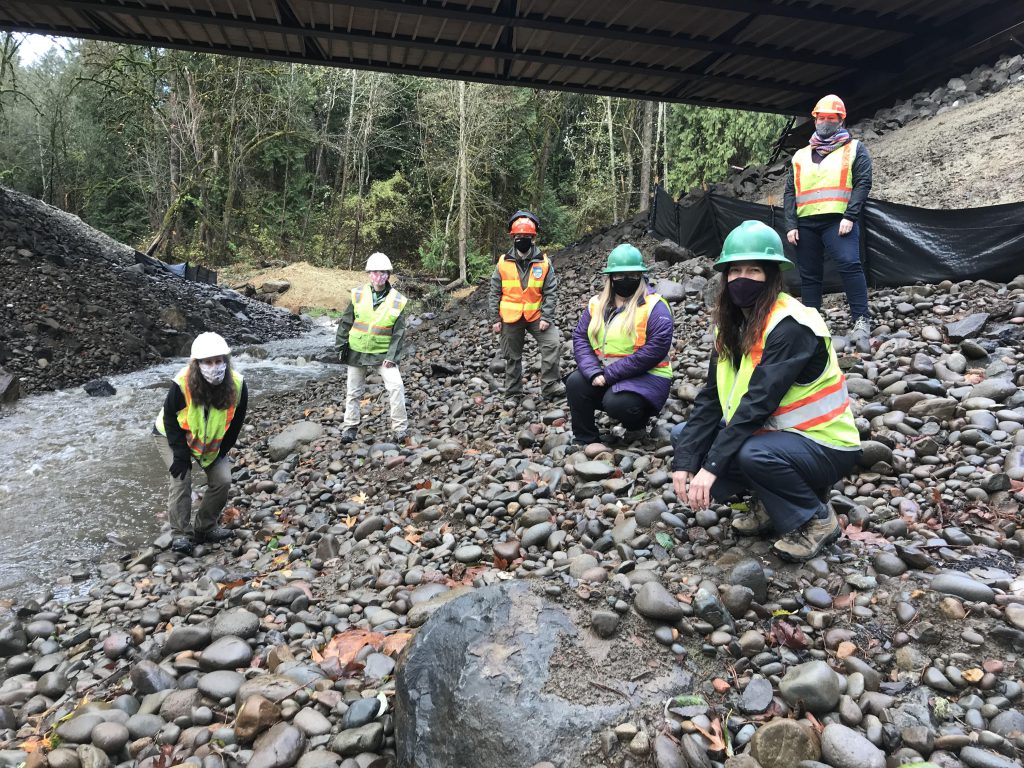Popping boba and women in STEM: Watershed 101 with Girl Scouts

Popping boba and women in STEM: Watershed 101 with Girl Scouts
This spring, we delivered a fish-focused Watershed 101 workshop to a Girl Scout troop based in the Tryon Creek watershed. These Juniors were working towards their Animal Habitats badge, and we were able to address several components to help them work towards that badge! Because of the focus on habitats, we included information about wildlife corridors in our presentation by showing the Wildlife Corridors layer from our interactive web map, and discussing how Tryon Creek’s confluence serves as a cool water refuge for migrating fish (screenshots below).

Screenshot of the Wildlife Corridors pathway from TCWC’s Interactive web map 
Screenshot from Watershed 101 workshop presentation demonstrating patches, corridors, and stepping stones for migratory salmonids.
For the “Create an Animal Habitat” badge requirement, each girl got some gravel and a container that they filled halfway with water. They also got a spoon and a fruit cup with the popping boba bubbles representing porous fish eggs. They could eat (or not eat) the fruit, and used the spoon to move the boba eggs to the gravel, then again used the spoon to gently cover the eggs without harming them – or, at least, trying not to!
This connected really well when we were asked why there are signs asking people not to play in the creek: because we have coastal cutthroat trout, and other, smaller fish (= smaller eggs!) in the Tryon Creek system, one reason is to avoid potentially stepping on in-stream habitat and damaging delicate eggs!


A final neat part about this presentation was that, with the habitat focus, we explained fish passage barriers and projects to remove them. In sharing the Boones Ferry culvert project specifically, one of the photos shared was of our project walk-through earlier this year: From the Public Works Supervisor, to Botanic Specialist, Park Rangers, and Program Coordinators, everyone there was a woman! Sharing the photo/story -and explaining the engineering side of fish habitat work- was a great chance for us to provide real-life examples of women in STEM.

Our Watershed 101 Workshop program is funded by the Community Watershed Stewardship Program through City of Portland’s Bureau of Environmental Services.


